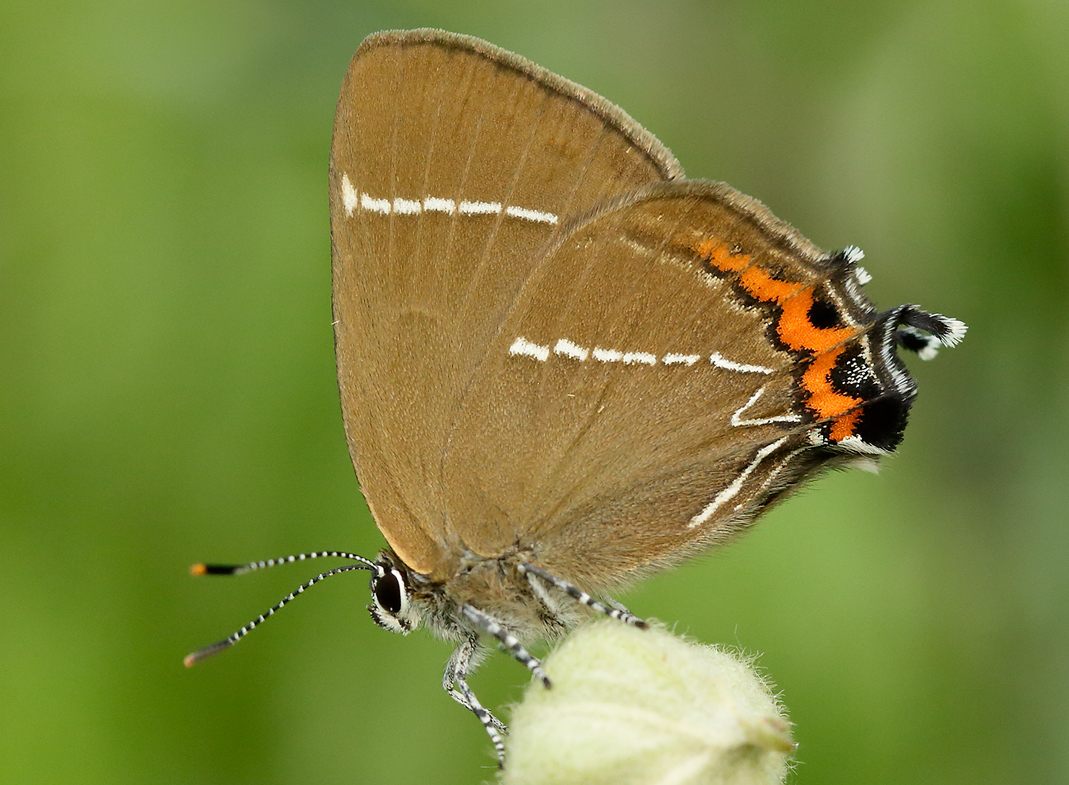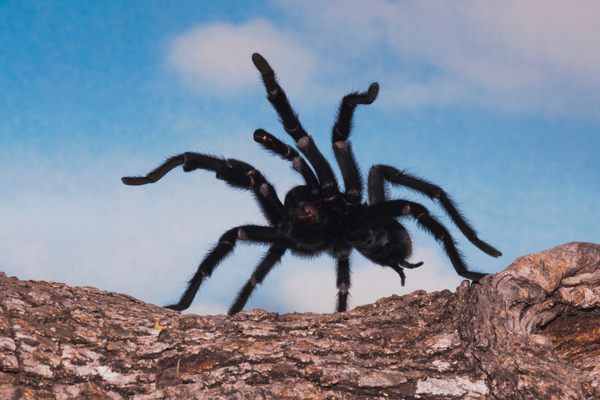Found: Eggs From a Butterfly Last Seen in Scotland 130 Years Ago
The white-letter hairstreak has been creeping north with warming temperatures.

The white-letter hairstreak, a brown butterfly with a distinctive white “W” marking on the underside of its hindwings, was last seen alive in Scotland in 1884—until last summer, when Iain Cowe from the nonprofit Butterfly Conservation spotted an adult flitting around wych elms near Lennel, in the southeastern part of the country. This year brought more evidence—in the form of minuscule eggs—that the white-letter hairstreak is back in Scotland for good.
“Last year was an impossible find, but this year’s egg discovery is beyond anything we thought possible,” Cowe said in a statement. The eggs, which are smaller than a grain of salt, were spotted by volunteers Ken Haydock and Jill Mills under the branch of an elm tree. Among them was an old, hatched shell, suggesting that the butterfly has bred in the area since at least 2016.
“It was a lovely sunny morning and we were searching the elm trees by the River Tweed at Lennel when Jill called me over,” Haydock said. “I could see by the look on her face that she had found something.” The find is pretty remarkable—a grain of salt in a forest is harder to spot than a needle in a haystack, even if you know where to look. And the insect’s eggs turn brown during winter, helping them blend in.

White-letter hairstreaks were once a common sight across England and Wales but the population declined by 72 percent when Dutch elm disease wiped out millions of their favorite trees in the 1970s. Over the past 10 years volunteers from Butterfly Conservation have been observing a gradual recovery and spread northward—perhaps a result of warming climate. The Scottish sighting is the northernmost reported by the team so far.
“We will need to have a few more years of confirmed sightings before we can officially class this butterfly as a resident species in Scotland,” said Paul Kirkland, director of Butterfly Conservation, in the statement. “ If this happens, it would take the total number of butterflies found in Scotland to 34, which really would be something to celebrate.”











Follow us on Twitter to get the latest on the world's hidden wonders.
Like us on Facebook to get the latest on the world's hidden wonders.
Follow us on Twitter Like us on Facebook